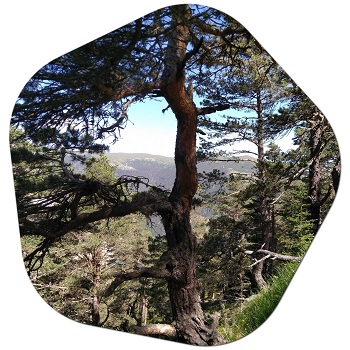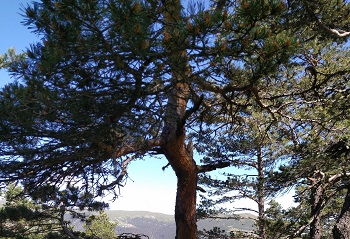In this article you will find the information you wonder about pine trees in Sweden. We have prepared an article where you can learn about pine in Sweden. We will give information about Is there pine in Sweden, pine tree cutting in Sweden, pine forest in Sweden, pine species in Sweden, what kind of pine in Sweden, how many years a pine tree lives in Sweden, Sweden’s pine tree varieties.
Sweden is home to several species of pine trees that are native to the country and contribute to its diverse forests. Here are some of the common pine tree species found in Sweden:
- Scots Pine (Pinus sylvestris): Scots pine is the most widespread and abundant pine species in Sweden. It is a native tree that can be found throughout the country, from southern regions to the far north. Scots pine is an important timber species and a characteristic tree of Swedish forests.
- Mountain Pine (Pinus mugo): Mountain pine, also known as dwarf pine or mugo pine, is found in certain regions of Sweden, particularly in the mountainous areas of the Scandinavian Mountains. It is a hardy species that can tolerate harsh conditions at higher elevations.
- Lodgepole Pine (Pinus contorta): Lodgepole pine is not native to Sweden but has been introduced and cultivated in certain areas. It is commonly found in reforestation projects and can be seen in some forested landscapes.
These are some of the main pine tree species found in Sweden. Each species has its own specific characteristics and adaptations to the Swedish climate and soil conditions. Scots pine is the most prevalent and ecologically significant pine species in the country, while mountain pine and lodgepole pine have more limited distributions.
Can I cut the top of my pine tree in Sweden?
In Sweden, cutting the top of a pine tree, commonly referred to as topping or pollarding, is generally not recommended or practiced for aesthetic or health reasons. Here are a few points to consider:

- Health and Growth: Topping a pine tree by removing its top portion can severely impact its health and growth. It disrupts the natural growth pattern and can lead to weak regrowth, multiple new branches, or the formation of a weak and structurally compromised crown.
- Tree Structure: The top of a tree, known as the leader or terminal bud, plays a vital role in the tree’s overall structure and growth. It helps with upward growth, apical dominance, and proper branch development. Removing the top can result in irregular growth and a less desirable tree structure.
- Tree Stress and Decay: Topping a pine tree causes stress and exposes the tree to potential diseases, pests, and decay. The open wounds created by topping can be susceptible to infection and decay organisms, compromising the tree’s health and longevity.
Instead of topping, it is generally recommended to consider other pruning techniques for pine trees that promote their health and maintain their natural form. This includes selective pruning to remove dead, damaged, or crossing branches, as well as thinning to improve air circulation and reduce excessive branch density. What kinds of pine trees are there in Sweden? >>
If you have concerns about your pine tree’s growth or structure, it’s advisable to consult with a certified arborist or tree care professional in Sweden. They can assess your specific situation and provide appropriate advice on pruning and maintaining the health and aesthetics of your tree.
Can you prune a pine tree in Sweden?
Yes, pruning pine trees is a common practice in Sweden, as it is in many other countries. Pruning pine trees can be done to enhance their health, shape, and structure. Here are some considerations for pruning pine trees in Sweden:

- Timing: The best time to prune pine trees in Sweden is during late winter or early spring, typically from late February to early April. Pruning during the dormant season before new growth begins allows the tree to recover quickly and minimizes stress. Avoid pruning during periods of active growth in the summer.
- Dead or Diseased Branches: Remove dead, damaged, or diseased branches as soon as they are identified, regardless of the season. Pruning these branches promotes tree health and helps prevent the spread of diseases or pests.
- Structural Pruning: Structural pruning is typically performed on young pine trees to establish a strong framework and proper branch structure. It involves removing competing or crossing branches, encouraging a central leader (main vertical stem), and maintaining balanced branch distribution. Structural pruning is usually done during the early years of tree growth.
- Selective Pruning: Selective pruning can be done on mature pine trees to improve their appearance, address safety concerns, or promote better spacing between branches. It’s important to avoid excessive pruning, as pines may not regenerate foliage easily on older wood.
- Pruning Techniques: Use proper pruning techniques when pruning pine trees. Make clean cuts just outside the branch collar (the swollen area where the branch meets the trunk) to aid in healing. Avoid leaving stubs or making flush cuts. Use sharp and clean pruning tools to minimize damage and the spread of diseases.
- Professional Assistance: If you are unsure about pruning techniques or the specific needs of your pine tree, consider consulting with a certified arborist or tree care professional in Sweden. They can provide expert advice tailored to your tree’s condition and help ensure proper pruning practices.
Remember to assess your tree’s specific needs and consider consulting with professionals if necessary to ensure the best results when pruning pine trees in Sweden.

Is there pine in Sweden